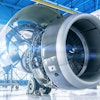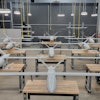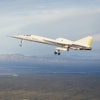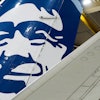
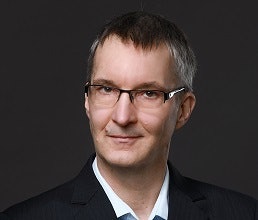 Jochen Michael
Jochen Michael The aviation sector ranks among the most innovative fields in the manufacturing industry. The field is in motion: new competitors are entering the market, and new technologies and business models foreshadow significant changes in the future. One of the highly promising technologies in the aviation sector today is Additive Layer Manufacturing, or ALM (also referred to as Additive Manufacturing or 3D printing). This Q&A will explain the technology, its use in aviation, and what limits and potential it offers today.
What exactly is included under ALM? Is everyone talking about the same thing when they say ALM?
ALM is not a single technology. There are many different technologies which are gathered under the term ALM. These include the methods FDM (Fused Deposition Modeling), SLM (Selective Laser Melting) and HDR (High Deposition Rate). FDM and HDR apply melted material path by path; with SLM, a powder is melted with a laser which is applied layer by layer. FDM is used with a wide range of thermoplastics such as PLA, ABS, PA and others. SLM is used with thermoplastic and metal powders. HDR is a hard surfacing layer process. In addition to the material properties, each of these techniques has its own advantages with respect to part size, construction speed, surface quality and post-processing.
Where could ALM technologies reasonably be used in the production process of aircraft, and where do you already use it now?
In aircraft construction today, primarily smaller parts with smaller quantities and high tool costs are produced with a tool-free ALM method. Plastic parts produced by ALM are used, for example, in the area of the cabin, ventilation or during system installation. In the area of production and assembly, printed tools and devices are already used in many places.
Generally, these are mainly parts under a low load such as cable holders or ventilation pipes, which are produced using FDM. The SLM method is used for door stoppers or parts of the fuel supply.
In contrast, the HDR method is currently not yet used in aircraft construction. One of the reasons for this is the fact that the qualification of this technology for aircraft construction with its high safety requirements is still pending. Thus a significant need for research still prevails in this field. However, there are some interesting application examples for the HDR technology, such as outer skin panels with imprinted stiffening ribs. Due to the modest surface quality with the HDR method, all welded surfaces must be milled off. This results in the same limitations in the design of the parts as with milled parts.
However, it is clear that with further development of the technologies towards faster and larger printers, applications for larger airplane structures will also be possible.
How does ALM change the process of aircraft production?
For the application of ALM in aircraft design it is necessary to qualify the production process. Therefore, hundreds of test parts are printed and analyzed with various process parameters. Especially for metal parts, the post-processing after the printing has a large influence on the fatigue behavior of the part.
The qualification process comprises not only the parameters for the laser output and scanning speed, but also includes the particle shape and size of the powder used, the heat treatment, the electrochemical polishing and many other parameters and steps until the part is ready for assembly.
For the qualification of a specific material for an ALM process, many parameters must likewise be considered. For example, the flammability, smoke and toxicity in case of fire, chemical resistance (hydraulic fluid, cleaning agent), corrosion and electrical properties must be taken into account.
The complete supply chain from the raw material up to the delivery of the finished part must also be qualified in the series production and be monitored. All of these qualification efforts are not specific to ALM – the procedure must be performed for all materials and processes. However, a particular challenge in this case is the lack of standardization for the processes and test methods.
What does the complicated qualification process mean in the course of production? Is it more expensive, longer, or more complex?
In general, any form of quality assurance has effects on the costs and duration of a process. Therefore, any new production method must undergo a qualification process. Because one thing is clear: the costs and effects when a part fails are usually significantly higher.
Will the complex qualification of ALM processes continue to accompany us, or is it like this because the use of ALM is still in its early stages, and you still almost have to "feel your way around"? The first known experience with machining was gained by mankind approx. 3.4 million years ago; nevertheless, research is still conducted today on the formation of chips. So one cannot expect, even today, that a new technology will be completely understood and mastered within 10 years.
At which points in today's production process must changes take place, and new mindsets and methods be employed, for the use of ALM?
A closer collaboration between all participants in the process is required. For example, the line between design and production must be fluid, in order to enable a production-ready design with the necessary supporting geometry. Furthermore, open, efficient standards for data exchange along the entire process chain must be created. Here in particular, the system manufacturers are required to authorize open standards.
Check back next week for part 2 of this Q&A, which will include the limits of ALM in aircraft manufacturing and how manufacturers might future-proof their processes.
Jochen Michael is a senior consultant at CENIT, one of the partners of the Bionic Aircraft Project.

